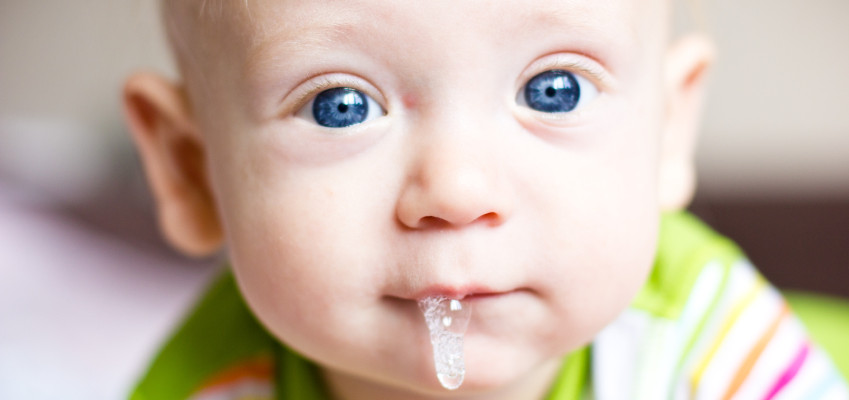
Drool happens! Here’s the nitty gritty about why, how long to expect it, and when to take action:
Drooling can begin around three months of age, and here’s the myth buster... its not because of “teething.” The first tooth will typically sprout around 4 to 7 months for most babies, which is quite some time after that drool starts. So maybe the drooling and the teething is more of a strong coincidence!
Experts believe that drooling starts to happen as more exploration begins. Babies use their sight, hands and mouths to explore and learn the world around them. As they start to put everything in their mouths, they begin to produce more saliva than they can swallow. Also, their bodies are getting ready for solid foods, and they need the extra saliva to produce enzymes to break down the food and begin to taste!
Drooling is also more frequent when a certain position or activity is challenging for your baby.
- 6 months: drools when trying to sit
- 9 months: drools when trying to stand
- By 15 months: a toddler should not drool with gross motor activities (e.g. walking), but may with fine motor activities (e.g. stacking blocks)
- After 18 months: child has control of saliva most of the time
- After 2 years of age: children do not typically drool
If after the age of 2, your toddler is still drooling, consult with your pediatrician. Persistent drooling may be caused by mouth breathing, which may be because your child just has a cold, or it may be a result of enlarged tonsils or adenoids. Also, excessive thumb sucking or pacifier use can sometimes cause a backward-positioned jaw, leading to mouth breathing.
Drooling may also be caused by a lack of muscle tone in the jaw, which will also affect speech. Try to encourage using straws to improve control over the lower lip and other muscles on the face in order to decrease drooling.
Use the Drooling Severity Scale (from the Consortium on Drooling) to consult with your pediatrician if you are concerned:
- Mild: drooling only into the lips
- Moderate: drool reaches the chin
- Severe: drool drips off chin and onto clothing
- Profuse: drooling off the body and onto objects (furniture, books)
If you are still concerned, consult your pediatrician, or contact us with questions
